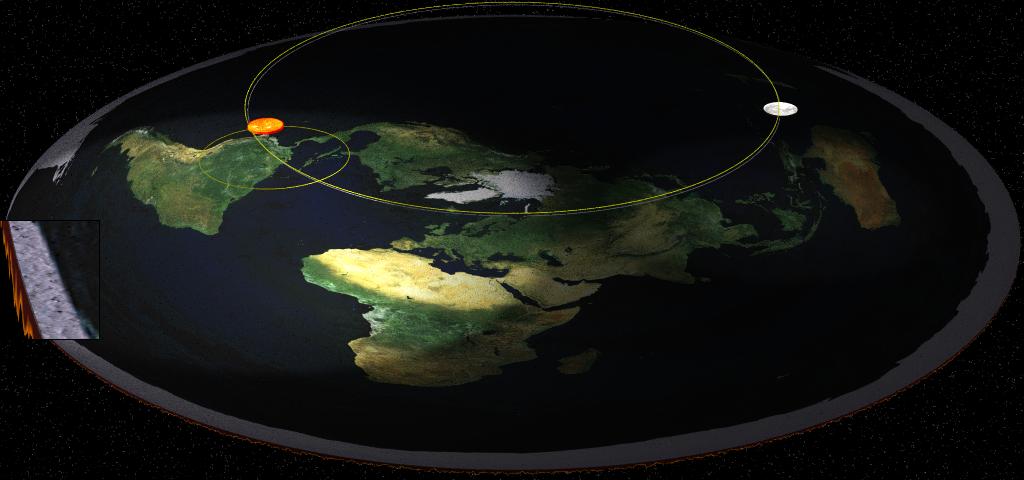For the purposes of this demonstration, we will define a sunset as it is in the dictionary ("the time in the evening when the sun disappears") but with one important distinction that must fit with an important observation. That is, the manner in which the sun appears to disappear bottom first and become obscured by the horizon.
On a round Earth with a circumference of 24,901 miles, it is possible for a sunset to occur because we "turn" away from the sun. It is easy to see why this happens when we use this model.
On a flat Earth, it isn't so easy.
In this topic, I will perform some simple geometry/trigonometry to show you where the problems lie.
Now, I am aware that a common argument by flat earther's is to simply say that the atmosphere is not transparent and that we cannot see forever through the atmosphere. This is a non-sequitur given the definition above. If we were to dismiss the observation of the sun actually disappearing bottom first then this would be a valid explanation, but I don't think we should do that. The sun does not simply fade away. It is not important that the sun simply disappears, what matters is the manner in which it does so.
I have used the common sun height used by flat earthers of
3000 miles. That height is often cited as the correct height and flat earthers have been so kind to offer diagrams showing how they attained this number. Here is a common one that is thrown around:

For the distance from the observer to the sun, please observe the following image, taken from the flat earth wiki, which depicts the sun's trajectory about the flat earth:

In some detail, the FE Wiki also goes on to explain the following
http://www.theflatearthsociety.org/tiki/tiki-index.php?page=Distance+to+the+Sun:
"On March 21-22 the sun is directly overhead at the equator and appears 45 degrees above the horizon at 45 degrees north and south latitude. As the angle of sun above the earth at the equator is 90 degrees while it is 45 degrees at 45 degrees north or south latitude, it follows that the angle at the sun between the vertical from the horizon and the line from the observers at 45 degrees north and south must also be 45 degrees. The result is two right angled triangles with legs of equal length. The distance between the equator and the points at 45 degrees north or south is approximately 3,000 miles. Ergo, the sun would be an equal distance above the equator. "If the earth is flat then I would have to agree with the quote but despite the image of a flat earth above, which depicts the sun at about the equator, I will exaggerate in favor of FE and "pretend" that the sun follows a path around Antarctic ice ring. If this is the case, then the diameter of the flat earth should be about equal to the round earth circumference of
24,901 miles.
So, now let it be understood that we use the following numbers:
3000 miles for the height of the sun.
24,901 miles for the maximum possible distance between the observer and the sun's location above the earth. (Reminder: This is an extremely gratuitous exaggeration that should only help to support the FE'rs argument.)
With that in mind, consider the following diagram:

If you do not know how to do trigonometry with a scientific calculator then feel free to use this
online right triangle calculator.
As you can see from the diagram, if the earth is flat then it is impossible for the sun to dip below the horizon as we all know it does. Therefore, it is safe to say that the earth cannot be flat because we experience sunsets.